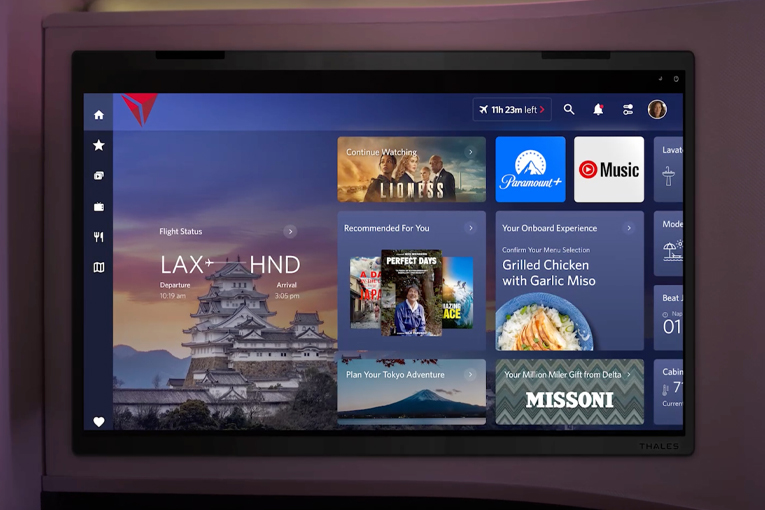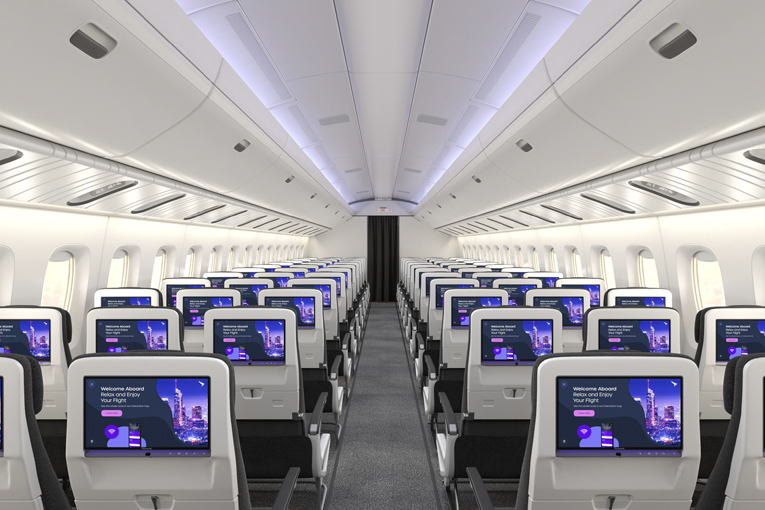A few years ago, I titled one of my first SoundStage! Solo columns “The Endless Hassle of Connecting to In-Flight Entertainment.” At the end of the article, I mentioned that some airlines were rolling out upgraded entertainment options that included the ability to connect to your own Bluetooth headphones.

Well, on a recent cross-country flight on United, I finally won the Bluetooth lottery. It wasn’t even some special perk in business class. I was in steerage. Connecting the Bose QuietComfort Ultra earbuds to the seat in front of me was just as easy as connecting them to any device. The only oddity was due to what I assume was an extremely weak transmitter: if I turned my head too far to the side—to look out the window, for example—the signal would drop.
This got me curious about how other airlines were handling this transition.
Air Canada: Air Canada’s in-flight Bluetooth options are expected to expand greatly this year, with new Panasonic in-flight entertainment units getting installed in over 80 aircraft, including Boeing 787-10 and Airbus A220-300, A321XLR, and A321.
American: American announced it was adding Bluetooth to new aircraft in 2024, but it’s unclear how many, if any, of these new aircraft and interiors have rolled out.

Delta: Right now, only a handful of aircraft, and just the first-class seats in those, have Bluetooth. Delta is rolling out a new version of its Sync in-flight entertainment system in 2026 in new Airbus A350-1000 and A321neo aircraft, and there will be Bluetooth throughout the cabin.
Ryanair: LOL. Yeah, right. I wouldn’t be surprised if Ryanair found a way to charge you to watch your own videos.

United: United has Bluetooth on a variety of aircraft, including 787, 737 Max, and some Airbus models.
Alternate routes
It’s great to see some airlines moving to where their customers already are, namely with the Bluetooth headphones and earbuds Apple had the “courage” to force on all of us (good luck finding any brand of high-end phone that has a headphone jack these days).
The vast majority of aircraft do not have Bluetooth, and it’s likely that most of those never will. This is because many airlines are skipping seatback entertainment completely. They’re removing touchscreens in aircraft that had them, or not putting them in when remodeling or buying new aircraft. Instead, what you get is what I experienced on the first flight of a recent trip. On this Alaska Airlines flight, passengers had to connect to the plane’s Wi-Fi network to stream the airline’s selection of TV shows and movies. With this setup, your device is the screen and, conveniently, it’s already connected to whatever headphones you have.
This works surprisingly well, or at least as well as in-flight entertainment ever works, and it’s likely the route most airlines will go in the future. After all, the cheapest, lightest screen is no screen at all. Adding USB-C outlets and a fold-out cradle to hold your device costs and weighs almost nothing.

In the meantime, for flights with neither that nor Bluetooth, you might want to be prepared with a Bluetooth dongle. I reviewed the AirFly for CNET a while back, and it works great. Put your headphones into pairing mode, hold the button on the AirFly until it flashes, and then an invisible handshake happens and you’ve got sound. A bunch of other companies make these as well. They’re not expensive, and they’re worth having on hand, even if you know your flight is supposed to have a more modern option.
Speaking of which, it’s hard to tell what options your flight will have. Some airlines are clear with this info; others aren’t. Also, aircraft changes can happen at the last minute. So it’s best to be prepared with a backup option: either a BT dongle or wired earphones.
. . . Geoffrey Morrison





